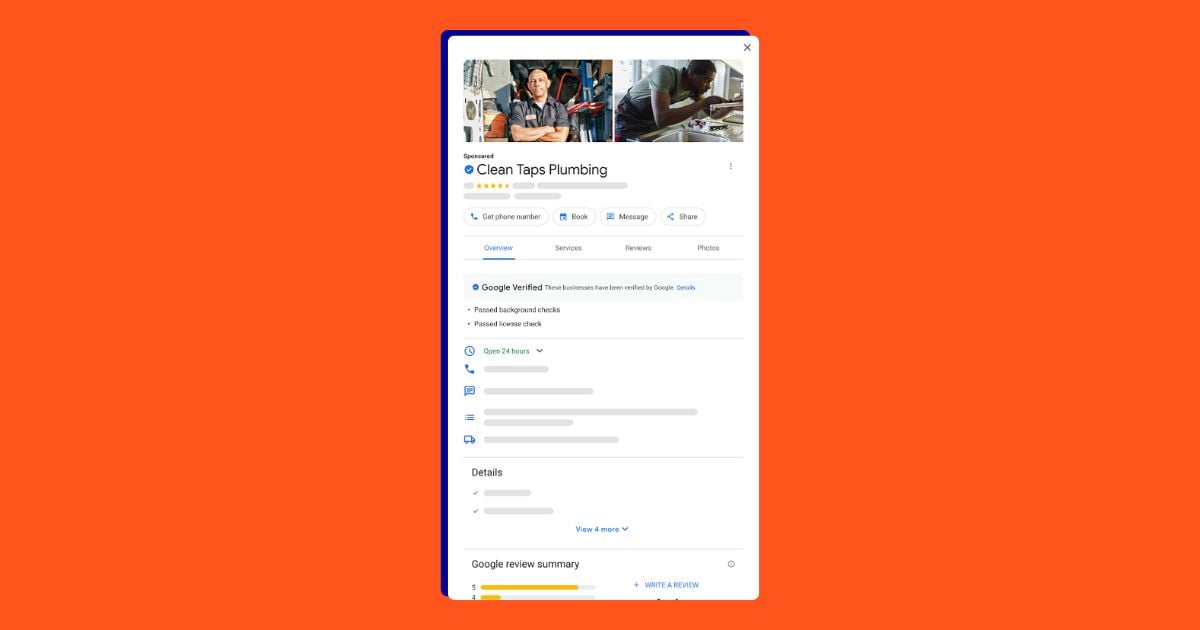Is it color or colour? What is the equivalent of a $20-a-day budget in rands? Is Germany six hours ahead of the United States or five?
I have been consulting and helping businesses with their paid search marketing in the United Kingdom, South Africa, Germany, China, and many other countries for the past three years, and these are some of the everyday questions I get. Along with working directly with our international WordStream clients, I also have a handful of US-based companies that advertise in almost every country around the world.
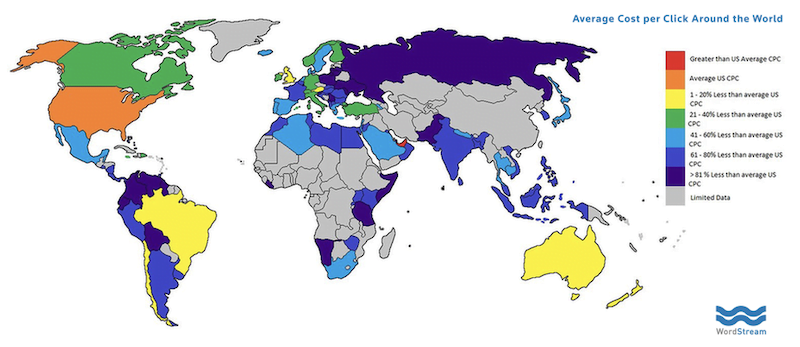
Whether you’re a startup expanding into a new international market for the first time, or have been in business for over 20 years and just want to grow your local presence, the paid search best practices remain the same, but there are certain details and strategies to pay extra attention to.
In this post, I’m going to share 21 strategies to help you ensure success with your international online advertising campaigns. I’ll provide:
- Tips and tools to properly target international locations and languages.
- Guidelines for keyword research and winning ad copy for international campaigns.
- Important considerations for time zones and ad scheduling.
- Effective strategies for building brand awareness in a new/international market.
Location targeting tips for international PPC ads
No matter what, it’s important to familiarize with the country you are targeting and it’s surrounding or associated countries. Your targeting strategy will also depend on what you are looking to achieve with your international PPC campaigns.
1. Research the location
One of the biggest mistakes I see most often is that of advertisers targeting an entire new country, without having done any research into where exactly that encompasses. For example, many businesses in England will look to target the entire United Kingdom when selecting location targeting for a new campaign, but it’s important to remember that this includes not only England, but Scotland, Wales, Northern Ireland, and the Isle of Man as well. Definitely very important details to know, especially when you take into consideration shipping costs of your products, transportation, and the overall effect it will have on your advertising ROI. In most cases, I’ve identified two different strategies based off of two very different scenarios:
2. Target large cities
This strategy is effective if you are located in your home country but are looking to expand your brand into another, new country. The best approach would be to target some of the larger cities where you’re going to see larger search volume and potentially have a wider demographic to reach.
For a US-based company looking to break into the United Kingdom market, for example, I would suggest starting with London, Liverpool, Manchester, Glasgow, and Cardiff as they have the largest volume of search traffic based on their populations.
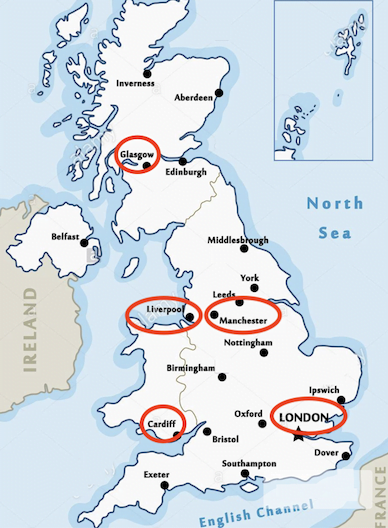
3. Aim for localized traffic
Use this strategy if you want to build your presence in your current home country. Starting off with radius targeting around your business or using your local city is key, and you can really drive paid search traffic in proximity. Pairing this with “near me” based keywords can be a great combination to maximize the potential of localized traffic. Location-based keywords can be your best friend, and developing entire ad groups based off of these types of keywords to pair with this strategy is the perfect fit. And if you’re also looking for ways to drive localized, organic traffic in a new country (in addition to paid traffic), check out these international SEO tips.
How to target language with international campaigns
Sprache ist der Schlüssel. La langue est la clé. El idioma es clave. Just three different ways of saying that language is key! Here are some tips and tools to help you with this component of your international campaigns.
4. Prioritize language consistency
In PPC, we’re taught that the language you select in your campaign settings needs to be the language in which your landing pages and ads are written, and this is very true. You want to make sure that you’re consistent with the language of your keywords, ad copy, and landing pages because this is something Google heavily takes into consideration when giving out Quality Scores and search page rankings.
5. Target multiple languages when applicable
However, let’s say you’re looking to start driving conversions from a new country you’re now targeting. You most definitely want to start with your original language and then you set another one on top of that. With both languages selected, you’re expanding into viewership from end users that may be bilingual. It is all dependent on what your audience members have as the language setting on their computers. This means that if your ads are in English, but you include Spanish as a targeted language, you have the ability to show your ads to people that are bilingual in both Spanish and English. Definitely a great way to start testing!

Note: This is a truncated screenshot; not all languages are shown here.
For more help with bilingual language targeting, check out our post on how to break into bilingual advertising.
6. Use Google Translate
Now, if you’re looking to full-on start creating campaigns with keywords and compelling ad copy in another language, the most user-friendly tool has to be Google Translate. This is a plug in for Google Chrome that you can download for free that easily allows you to translate back and forth between pretty much every language out there. I’ve had the awesome experience of getting to create ad copy in Spanish, French, German, and even Arabic.
When translating and creating ads, you need to be conscious of the character limits in the headlines and descriptions, but the icing on the cake would be to also make sure your landing pages can translate into your new targeted languages as well. This will certainly improve the likelihood and ease of conversion capability of your new audience.
Keyword strategies for your international paid search strategy
As with any paid advertising campaign, having a keyword strategy is imperative when advertising internationally. Below are some guidelines and tools to help you identify the best words and phrases to target in your international campaigns.
7. Use keyword research tools
You may think you know what your potential customers are typing into Google and other search engines, but you may not know all of it. Plus, jargon that is second nature to you is not always the same as the terms a consumer will use with regard to your industry or services. Keyword research tools, such as WordStream’s Free Keyword Tool or Google’s Keyword Planner, will ensure you’re on the right track with adequate-volume, high-value keywords for your campaigns.
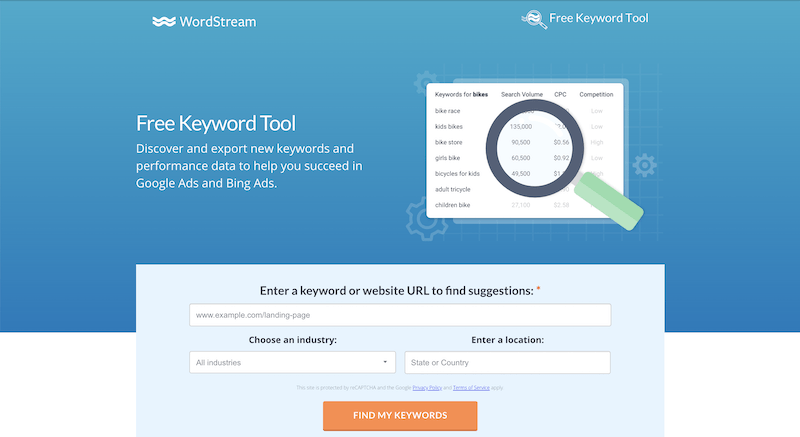
WordStream’s Free Keyword Tool
8. Pay attention to nuances
One of the biggest lessons I’ve learned is that just because we say something one way in our own language, doesn’t mean that other languages use the same wording or phrasing. For example, I’ve worked with hundreds of businesses in the United Kingdom and a handful of them are lawyers. However, the word lawyer is very much an “American-style” word; people in the UK generally use the word attorney instead. Small nuances like this make all the difference in the world when your goal is to drive relevant traffic in a new international market.
9. Perform competitor research on Google
Another very simple yet very helpful tactic to help with your keyword research would be to perform your own Google searches for similar products/services in your new market. This could give you some new ideas not only for keywords to start utilizing, but also for the ad creation process. Along with auction insights, it will also provide a good idea of who your local competitors may be.
10. Review your queries
With the proactive research that comes from using keyword research tools, being reactive in a sense can also help your keyword strategy once your campaigns start running. I always feel that using the Querystream in WordStream or the Search Terms Report in Google is our way of hearing directly from the customers themselves. I would suggest utilizing a tiered or stacked bidding strategy by taking advantage of the exact, phrase, and modified broad match types of the keywords you identified during the research process. Once you’ve gathered some initial click data from those, you can then analyze the search terms and see if there are new or long-tailed terms that may increase your relevancy when advertising in a different country.
Tips for building awareness in a new/international market
Like breaking into any new market, one of your first goals with advertising will be to start building as much brand awareness as possible. You want to get end users excited about the product or service you are promoting. This can be difficult if you’re just relying on search campaigns alone. Here are my tips and tricks to help remedy that.
11. Start with display ads or video campaigns
If people have never heard of your brand before, it may be challenging to break into a new market that already has other established brands they’re more familiar with. If your industry also has a lot of local competition or expensive keywords, this can deplete your budget very quickly with little to no return to you.
My advice would be to have at least one or two display or video campaigns that we can utilize to start building your top-of-the-funnel strategy. Display tends to have a much lower cost per click than search, so it can be a great way to reach a large number of people by impressions and also generate a decent number of clicks with a smaller budget.
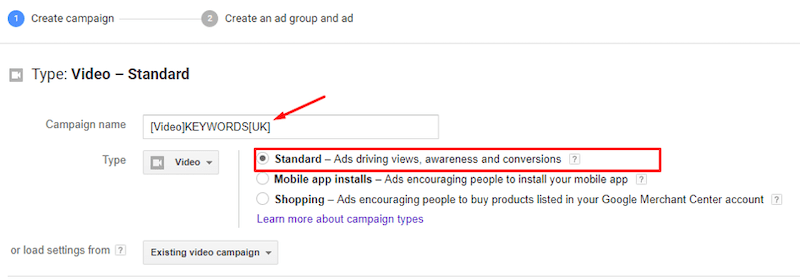
12. Use “Observation” mode in search campaigns
One tactic I find to be very helpful takes advantage of previous information you should already have from your search campaigns in our home markets. That would be data we can take from having audiences created via “Observation” mode in Google Ads.
Applying relevant (and sometimes irrelevant) audiences to search campaigns in “Observation” mode allows you to dive deeper into the demographic makeup of the people clicking on your ads.

Below are the types of information you’ll be able to see by observing those audiences for a period of time in your search campaigns:
- In-market: what people are actively looking for
- Affinity: things people look for or do habitually
- Detailed demographics: parental status, education level, and more
- Remarketing data: website visitors
This data is absolutely priceless because you can then use it to pick audiences you want to target with your display campaigns. If you see that a search campaign has a particular audience that converts really well and has a good CPA in your home market, you can then apply that as the targeting method for a display campaign. This way you can start building awareness among an audience that you know has a track record of performing well. Display can also help to start building up your remarketing lists for website visitors that we can take advantage of in the future for either display remarketing campaigns or RLSA campaigns.
Important time zone considerations for international campaigns
For the past three years while working with our international clients, I have worked a shifted schedule of 6:00 AM to 2:00 PM Eastern Time. This allows me to work with clients that are five or six hours ahead and still have a large portion of their workday during which we can schedule consulting calls. That being said, time zones and time differences are something you need to also consider when creating ad campaigns to target other countries. Here are some important considerations for running your international ads at the right time.
13. Check your time zone
When you first create a new ad campaign, it will automatically run 24 hours a day, 7 days a week, 365 days a year—unless you specify otherwise. It’s important to go to the “Ad schedule” section in Google Ads and create a custom schedule that shows your ads during the most opportune time of the day in the new country you’re advertising in.
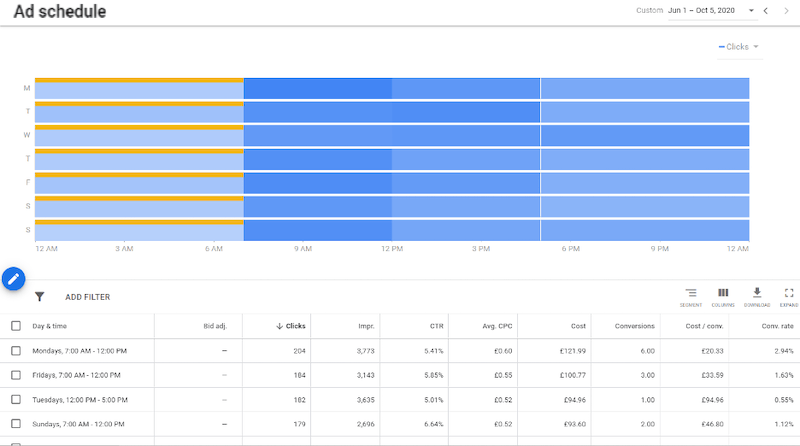
The first thing you’ll want to check in the “Ad schedule” tab is which time zone your account falls under—which will display at the bottom of the page. Usually this will be the time zone where the ad account was originally created, so it’s good to double check in case you’re advertising for a country outside of the one you’re currently in.
14. Create a custom schedule
Once you know this, you’ll then need to do a little math to create a custom schedule. For example, if my ad account is under Eastern Time, but I’m advertising in South Africa (which is 6 hours ahead of EST) and I want my ads to run from 9:00 AM to 5:00 PM South African time, then you would need to have them start at 3:00 AM and end at 11:00 AM EST. Being proactive with this right from the start will ensure you’re going to get the most value from your budget.
15. Create region-based campaigns
One common mistake I see is that of campaigns targeting multiple countries and multiple time zones all at once. If you’re targeting European countries, but I also have APAC region countries in the mix, your results may not be great because of the large differences in time. A good practice if you’re looking to target multiple countries under one campaign would be to create region-based campaigns that would ideally only cover three different time zones maximum.
16. Target one country per campaign
One of the most effective strategies I’ve seen is to keep North America, South America, Western Europe, Eastern Europe, APAC, and Australia/New Zealand separate so that you can create custom ad schedules for each. If you have the budget and are able to get even more granular, the most optimized method would be to have each campaign target one country. This way, you can make sure your ad scheduling is in tip-top shape and that you’re maximizing the positive results you can get.
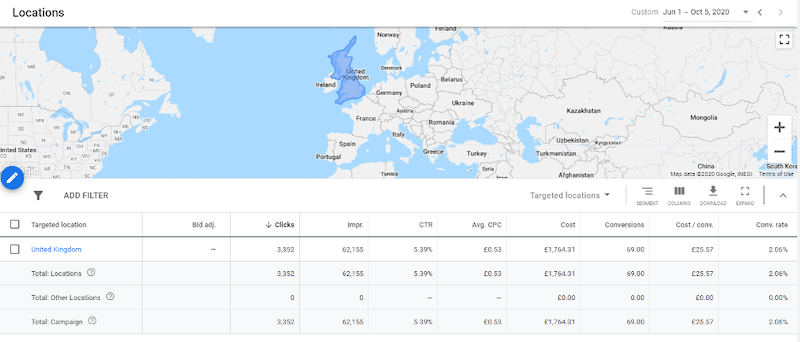
International ad copywriting guidelines
You’ve done your keyword research, have your custom ad schedule lined up, and new language targeting selected. Now it’s time for the cherry on top: writing the perfect ad copy! Going hand-in-hand with keyword research, this is one of the major areas of paid search marketing where you’ll get to learn more about the culture of the area you’re marketing in.
17. Take note of spelling differences
I’ve been corrected many times when helping clients in the UK with their ad copy, such as to remember it’s colour; not color, humour; not humor, or favourite; not favorite. Even though English is the common language spoken by the US and the UK, the British usage of “ou” in certain words is not something we use in the United States.
18. Create headlines
Along with observing word and phrase differences, you also want to make sure you’re creating effective headlines that speak to your international audience. Are local locations important to utilize in headlines? Should you use all 180 description characters or try and keep it short and sweet? What flexibility does Google Translate allow when trying to utilize your main keywords?

19. Use RSA and expanded text ads
One major suggestion I always give is to add in a responsive search ad along with two regular expanded text ads. With the creation of new campaigns and ad groups, it’s important to A/B test different ad copy to see which resonates more with your end users.
Including a responsive search ad helps you to not only test different headlines and descriptions, but it also will help your chances at a higher CTR and CVR by aligning the search terms with your most relevant headline.
20. Familiarize with how local businesses communicate in their own home market
Take a look at the ads, website copy, and social media posts of local businesses in your new market—especially those that are you competitors. Common words and phrases you pick up on are likely the most effective for that particular region. This is a great way to identify and align with how local businesses communicate in their own home market.
21. Talk to your new customers
One final piece of advice I have is to talk to your new customers. As you start building up new leads, sales, and relationships, you should take that opportunity to hear directly from the customer. Find out what they look for when viewing ads and optimize accordingly. Always remember to be constantly testing new ad copy until you can lock in on what works the best!

Apply these international PPC best practices for maximum results
Getting to work with our international clients has given me the amazing opportunity to help some pretty cool businesses over the last 3 years. As mentioned at the beginning of this post, the overall best practices for PPC advertising apply to any type of campaign, but international campaigns come with some additional details and nuances to consider. When building out your international PPC strategy, it’s important to do your research with regard to location and language targeting, bidding as it relates to local currencies, scheduling with respect to time zone differences, local communication strategies, and more. Not only will this ensure the success of your campaigns, but you’ll also get the opportunity to experience different cultures, learn new words and phrases, and discover that no matter where you are in the world, marketing is a universal language.


